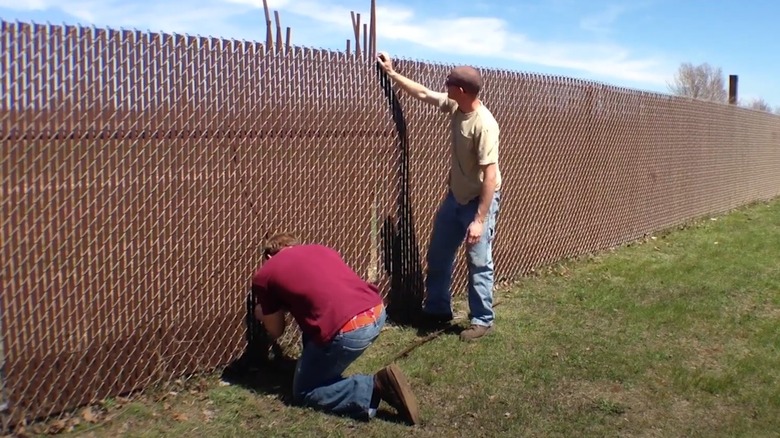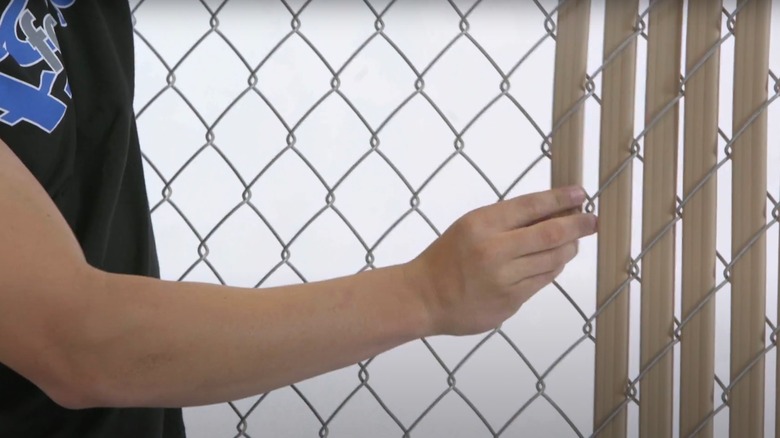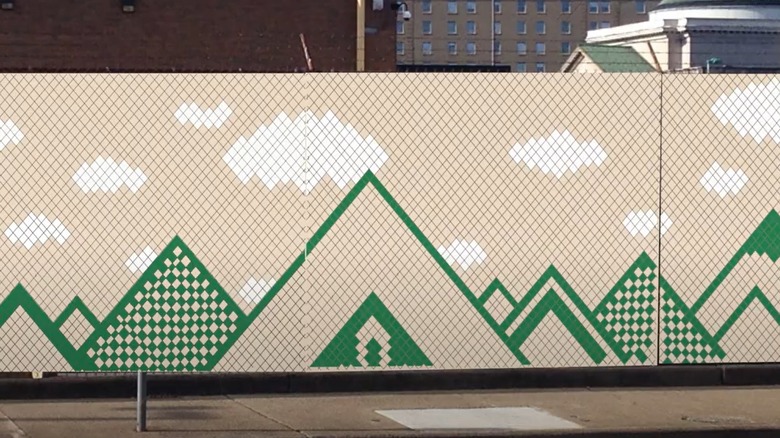Privacy Tape Vs Slats: Which Is Better For Your Chain Link Fence?
Many people install fences to provide some privacy for their yard. A chain-link barrier doesn't offer much, though, thanks to the wire-mesh design between the support posts. If you'd like to block the view into your yard without tearing out the metal and installing a new fence, you can add materials to the gaps and create a significantly higher level of privacy.
Although you have multiple options for blocking the view through your chain-link fence — such as by placing a screen over the top of the wire or growing a vertical garden to cover it — slats and privacy tape are often the better choices. Screens can block the view into your yard, but they tend to be temporary solutions because they can tear and flop around in wind and rough weather. As for plants, they experience dieback in winter, allowing people to look through the wire mesh.
Tape and slats tend to deliver more permanency than screens, as they're crafted of materials made to last. High-quality slats can last decades, while fence privacy tape can last 15 years or more. Even though both options are extremely durable, there are some key differences between them. Here's what you need to know before running to the nearest home hardware store.
Benefits of using slats over privacy tape
One of the biggest advantages of slats is the highly durable material used to make them. Some consist of high-density polyethylene (HDPE) or polyvinyl chloride (PVC), which both stand up to harsh weather conditions, maintain their consistency in low temperatures, and have UV protection. Slats are also slightly flexible, which makes it easier to weave them into the mesh pattern of the chain-link fence. Aluminum options are also available if you want more rigidity. Meanwhile, privacy tape usually consists of low-density polyethylene (LDPE). Although both LDPE and HDPE are durable, HDPE has more rigidity than LDPE.
The hardness of slats and their vertical installation technique make them a little easier to set up than privacy tape, which requires diagonal alignment. Tape also requires fasteners to secure the ends of each segment, lengthening installation time. Although both options are available in multiple colors, some slats provide unusual textures and looks. For example, you could select designs made to resemble plants or hedges. A bit of bright green color and some texture can give your chain-link fence a completely different look than typical slats or privacy tape. Sure, you can plant vines to block the view through the wire mesh, but they'll go dormant in winter and their leaves will fall off, removing the privacy benefit until the following spring. That's not a worry with artificial hedge slats.
When to select privacy tape instead of slats
Using vinyl tape to create privacy on a chain-link fence is slightly less expensive than using slats. For example, if you have a fence that measures 4-by-30 feet, you would need 120 square feet of material. For 120 square feet of slats, you'd typically pay $135 to $145. For 120 square feet of vinyl tape material, you'd typically pay $100 to $110. (If you do go with slats, you could potentially pay less per square foot of coverage for a taller fence compared to a shorter one.)
When you select vinyl tape for your chain-link fence installation, you receive a slightly greater level of privacy from the LDPE material — 90%, compared to the 88% HDPE slats provide. Should you choose slats that have a faux hedge pattern or a similar type of texture, though, you could match the 90% privacy coverage that LDPE privacy tape delivers. Because of the diagonal orientation of the privacy tape installation and the availability of multiple colors, you could draw out a plan and make an artistic mural on the chain link. Comparatively, the vertical installation of the slats and the need to secure them to a locking channel at the bottom of the fence makes it much more difficult to create an artistic design.


